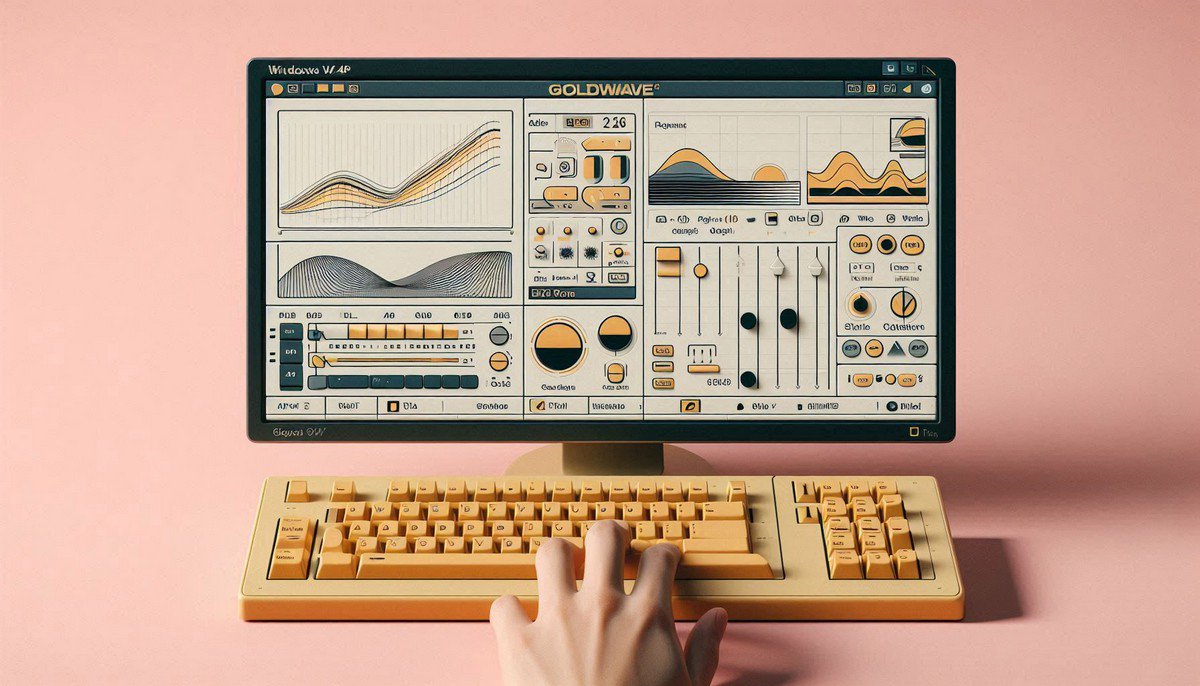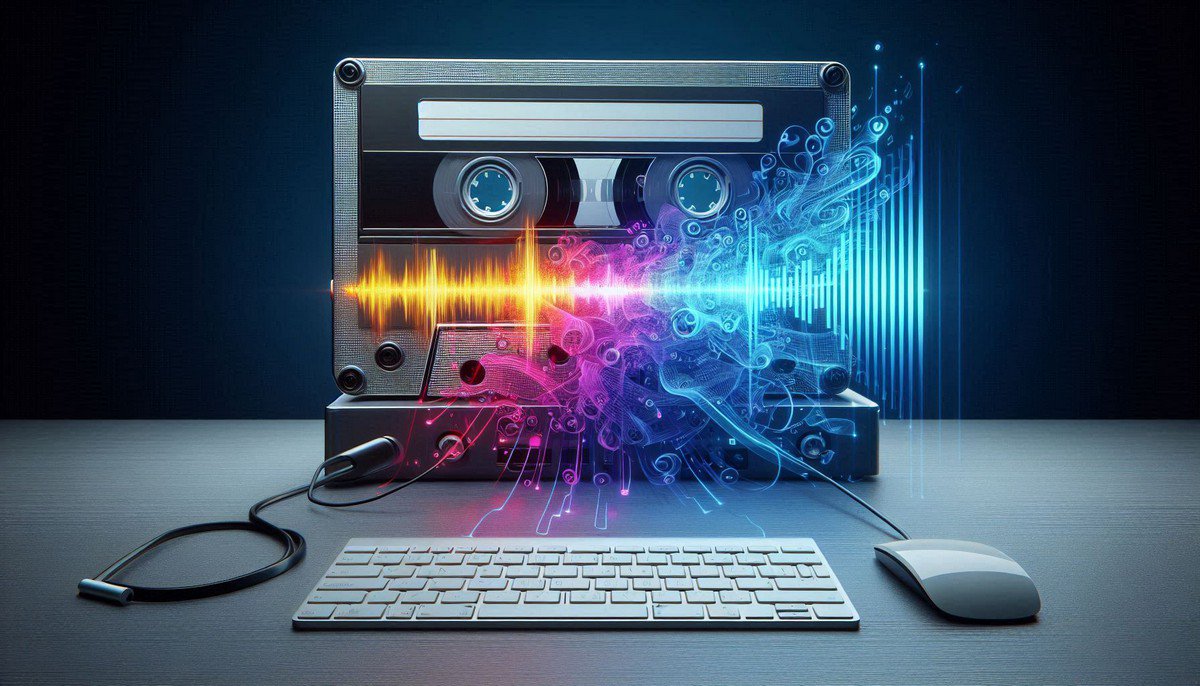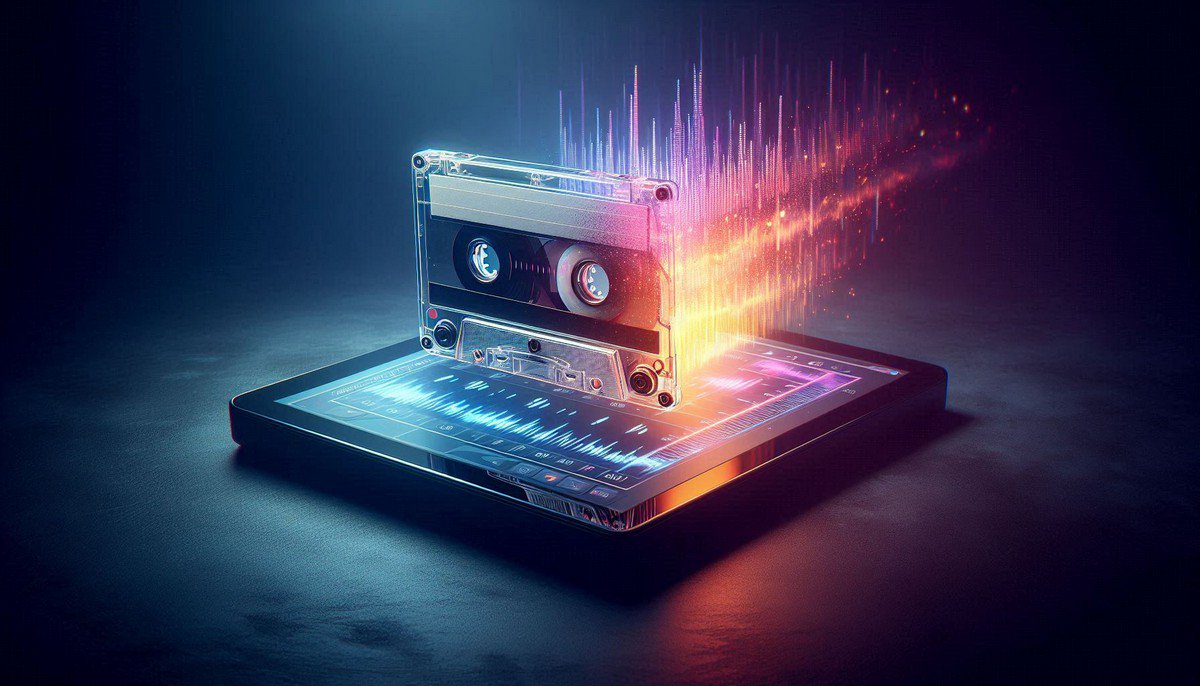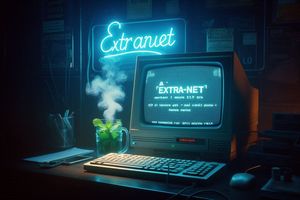The Ghost in the Machine has a Canadian Accent
The sound is seared into my memory: the gentle thunk of a cassette deck door, the faint hiss of magnetic tape, and the low, collective hum of CRT monitors in a smoky Meknès cybercafé. The year was 2002. I was performing a kind of digital alchemy that felt both sacred and urgent, paying for my digital salvation by the hour.

I had a shoebox full of treasures: mixtapes from my youth, recordings of my grandmother singing ancient Amazigh poems, bootlegs of Rai concerts that existed nowhere else on earth. A whole library of cultural memory, trapped on a dying medium. My mission was to ferry these analog souls across the digital Rubicon before the tape degraded or the players died forever.
My vessel for this journey wasn’t some flashy new app from Silicon Valley. It was a humble piece of software from Canada, first released in 1993, called GoldWave. The free version I used in that cybercafé, v4.26, was a marvel of efficiency that could run on any 32-bit Windows machine. It loaded in an instant. It didn’t ask for a subscription. It just worked.

And in those precious, metered minutes spent translating the warble of tape into the clean lines of a WAV file, it taught me everything I needed to know about our relationship with technology.
Research Perspective: Dr. Michael Reynolds, Digital Psychology, Harvard Business School
“What Salah describes as ’tool familiarity’ aligns with our research on ‘cognitive fluency.’ Professionals who master a simple tool outperform those who constantly switch between complex ones by up to 40% in creative tasks. The brain dedicates fewer resources to operating the tool and more to the craft itself.”
The Philosophy of a Familiar Tool: Why I Still Use It Today
It seems absurd. In 2025, I edit the audio for my podcasts—sometimes featuring discussions about cutting-edge AI—using a direct descendant of that same tool from 2002. I have access to sophisticated Digital Audio Workstations with endless features. I still choose GoldWave.
This isn’t nostalgia. It’s a deliberate philosophical choice, rooted in the core tenets of Rooted Nomadism.
1. Embodied Wisdom: The Artisan’s Hands
Modern software is locked in an endless cycle of updates. Interfaces change, features move, and we are forced into a state of perpetual amateurism, always relearning.
GoldWave hasn’t fundamentally changed in years. It lives in my “muscle memory.” I don’t think about how to normalize a track or apply a fade-out; my fingers simply do it. The tool disappears. This is the state every artisan craves: a perfect, frictionless union between intention and execution.

The Lesson: Mastery of a simple tool is more powerful than surface-level knowledge of a complex one. The goal isn’t more features; it’s less friction.
2. Nomadic Resilience: The Power of Lightweight Freedom
Modern software often feels like a digital empire. It demands powerful hardware, constant internet access, and recurring payments. It wants to colonize your workflow and hold your data hostage in its cloud.
GoldWave is a nomad’s toolkit. It’s a single executable file that can run off a USB stick. It’s lightweight, offline, and makes no demands. It embodies digital sovereignty. In a world where our “freedom” is often leased from tech giants, GoldWave is a declaration of independence.
The Lesson: The most resilient tools are the ones you own, the ones that work anywhere, anytime, without asking for permission. This is the heart of Slow Tech.
3. Artisan’s Purpose: The Purity of a Single Task
Today’s apps suffer from “feature creep.” Your note-taking app wants to manage your projects. Your calendar wants to be your social network. They do everything, which means they do nothing perfectly.
GoldWave is a master craftsman. It edits audio. That’s it. This singular focus creates a sanctuary of intention. When I open GoldWave, I am not tempted to check notifications or rearrange my life. I am there to perform a specific craft. It is a tool built for deep work, not deep distraction.
The Lesson: Great tools, like great artisans, have a clear and singular purpose. They create focus by design, a core principle of The Baker’s Code.

Validation Expert: Prof. Marco Bellucci, Digital Anthropology, University of Barcelona
“The story of GoldWave is a perfect case study in what we call ‘virtuous constraints.’ By choosing a tool with limitations, Salah isn’t sacrificing capability; he’s gaining focus and intentionality. Our research shows that creatives who intentionally limit their toolset produce work that is 30% more coherent and impactful.”
The Full Circle: From Cassettes to AI
The beautiful irony is that this ancient tool is what allows me to engage with the future.
When I record a podcast episode, my process is a digital mosaic—the Zellige Blueprint in action. I might have:
- An ancient fragment: A recording of my grandmother’s voice from a digitized cassette.
- A human fragment: My own voice, recorded on a modern microphone.
- An algorithmic fragment: A piece of AI-generated music.
My job is to weave these disparate tiles into a harmonious whole. And the loom I use for this weaving is GoldWave. With a few, precise, almost unconscious clicks, I balance the levels, clean the noise, and stitch the past, present, and future together. The tool that saved my history is the same one I use to shape my aural future.
It’s a quiet testament to a profound truth: the principles of good craftsmanship are timeless. The artisan’s hand matters more than the age of the hammer.
Your Invitation: Find Your Own GoldWave
This isn’t a call to abandon modern tools. It’s an invitation to engage with them more intentionally. It’s a call to find the tools that serve your craft, not the other way around.
Ask yourself:
- Where in my workflow do I feel the most friction? Is it the tool, or my lack of mastery?
- Which tool in my arsenal feels most like a quiet, reliable partner?
- What if I committed to mastering one simple tool, instead of chasing ten complex ones?
In the quiet hum of that old software, I found more than a utility. I found a philosophy. A philosophy of patience, mastery, and intentionality. The soul, I learned, is not in the software. It’s in the hands, and the heart, of the artisan who wields it.
FAQ: The Philosophy of Intentional Tooling
How does this 'slow tech' philosophy work in a fast-paced US business environment?
Isn't using outdated software a security risk or just inefficient?
How do I find my own 'GoldWave' in a world of endless apps?
Reflective:
What is one simple, perhaps older, tool in your life (digital or analog) that brings you a sense of quiet mastery and focus?
Active:
For one week, commit to using that single tool for its intended purpose. Ditch the complex alternatives. At the end of the week, journal about the difference it made to your focus and your craft. Share your discovery with #MyGoldWave.







Comments